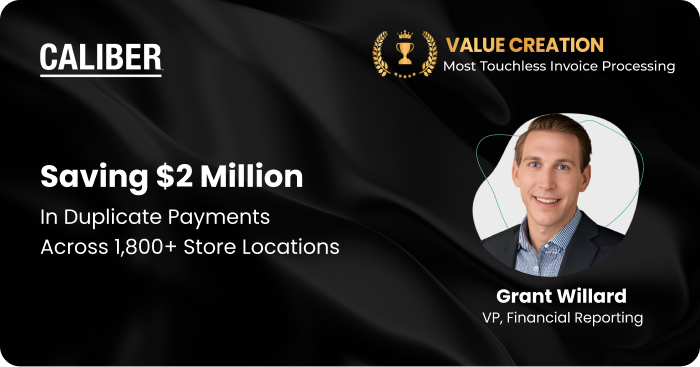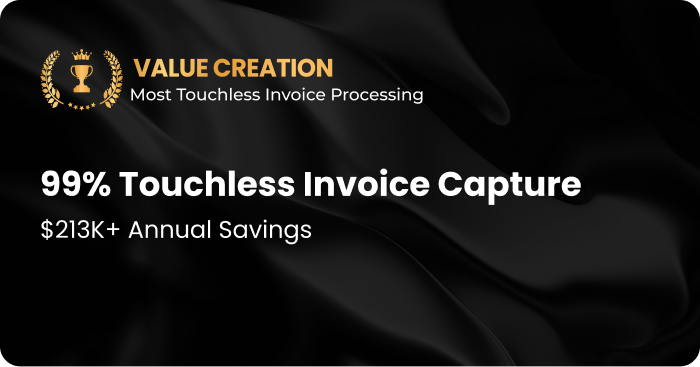
Lower invoice cycle time by 50% with Agentic AI.
Just complete the form below

Eliminate manual tasks, reduce errors, & accelerate approvals with AI-driven data capture, 3-way matching, & seamless ERP integration.
Eliminate manual data entry, automate invoice matching, and streamline approvals with AI-driven workflows and real-time tracking.
Enforce compliance by standardizing workflows, automating approvals, and ensuring every invoice aligns with company policies.
From managers to CFOs, HighRadius helps the entire AP team to achieve their targets.
HighRadius empowers your team with Agentic AI to eliminate repetitive tasks, auto-resolve exceptions, and fast-track invoice processing—so you can focus on what really matters.
HighRadius transforms AP from a cost center into a strategic lever with real-time data, discount capture, and complete control over working capital.
HighRadius offers ERP-native, API-first integration with minimal IT lift—so you can modernize AP workflows without disrupting your core systems.
Your AP process may look fine—but you can easily automate 90% of it. Get actionable insights to choose the right automation solution for your needs.
Download WhitepaperReady-to-use scorecard that highlights both key and overlooked features, enabling you to effectively compare AP solutions and select the optimal fit for your business.
Download TemplateSpot hidden AP inefficiencies, choose tools with 90%+ automation, and cut processing costs by up to 50%.
Download GuideAutomated invoice management is the use of automation to streamline and simplify the processing of vendor invoices. An invoice management system automates key steps like invoice data capture, validation, approval workflows, and payment processing.
Traditional manual processes can be time-consuming and prone to errors. An invoice management system eliminates these inefficiencies by using AI and OCR to capture data accurately, validate invoices through two-way or three-way matching, and route them for quick approvals.
This end-to-end automation reduces manual intervention, ensures compliance with tax regulations, and provides real-time visibility into invoice statuses. By integrating seamlessly with ERP systems and other tools, an invoice management system helps businesses enhance productivity, optimize cash flow, and maintain strong vendor relationships.

Agentic AI starts by automatically capturing invoices from emails, EDI feeds, or uploads. The system classifies documents (PO vs. non-PO), extracts structured data using LLMs and ML, and handles multi-page merging or splitting—delivering high-accuracy data from day one.
The Invoice Capture Agent validates invoice totals, flags duplicates, and cross-verifies supplier information using ERP master data. It retains itself continuously based on user feedback, reducing manual corrections over time.
For PO invoices, AI agents retrieve PO and GRN data via ERP integration and match invoice lines using item descriptions, codes, and quantities. They flag exceptions like price or freight mismatches and apply tolerance thresholds automatically where possible.
For Non-PO invoices, AI recommends GL accounts and dimensions based on historical patterns. It supports cost splits and lets AP teams or business users collaborate on missing inputs via an intuitive interface.
Invoices that meet the approval policy are auto-approved. Others are routed intelligently based on thresholds, business units, or geography. Agents interpret email approvals and maintain an audit trail for compliance.
Once approved, invoices are automatically posted to the ERP in real-time or in batch, with master data validation and error handling built in. Failed postings are flagged and resolved through a guided workflow.

With HighRadius' Agentic AI-powered AP automation software, invoice processing cycle time is 2X faster, and overall productivity improves by 40%.
Book a Discovery Call

Traditionally, invoice management involves a manual and often cumbersome process. This includes:
An invoice management system is a software solution that automates and streamlines the entire invoice lifecycle, from receipt to payment. It leverages technologies such as Optical Character Recognition (OCR), Artificial Intelligence (AI), and Machine Learning (ML) to automate tasks such as data capture, validation, approval routing, and payment processing.
An invoice management system offers numerous advantages. It automates manual tasks, reducing processing time and freeing up valuable resources for AP staff. By minimizing human errors in data entry and validation, it ensures accurate and timely payments. Real-time visibility into invoice statuses allows for better tracking and control.
Faster processing improves cash flow by enabling early payment discounts while also reducing operational costs and late payment penalties. Additionally, it ensures compliance with internal controls and regulations, strengthens vendor relationships through timely payments, and enhances data security with robust protection measures.
When selecting an invoice management system, consider these key factors:
Implementing an invoice management system typically involves the following steps:
The cost of an invoice management system can vary significantly depending on factors such as the number of users, the features included, the level of customization required, and the chosen vendor. Pricing models can include subscription-based fees, per-user fees, or a combination of both. It’s essential to carefully evaluate pricing options and compare different vendors to find the most cost-effective solution for your business.
The time savings achieved with an invoice management system can vary significantly depending on factors such as the volume of invoices processed, the complexity of the AP process, and the specific features of the chosen software. However, many businesses report a significant reduction in processing time, often in the range of 50% or more. This translates to significant time savings for AP staff, allowing them to focus on more strategic tasks.
Yes, most modern invoice management systems offer seamless integration with other business applications such as Enterprise Resource Planning (ERP) systems, accounting software, and customer relationship management (CRM) systems. This integration ensures smooth data flow, eliminates manual data entry, and improves overall operational efficiency.
Yes, invoice management systems can help prevent duplicate invoices by:
Yes, invoice management software can help prevent invoice fraud by: